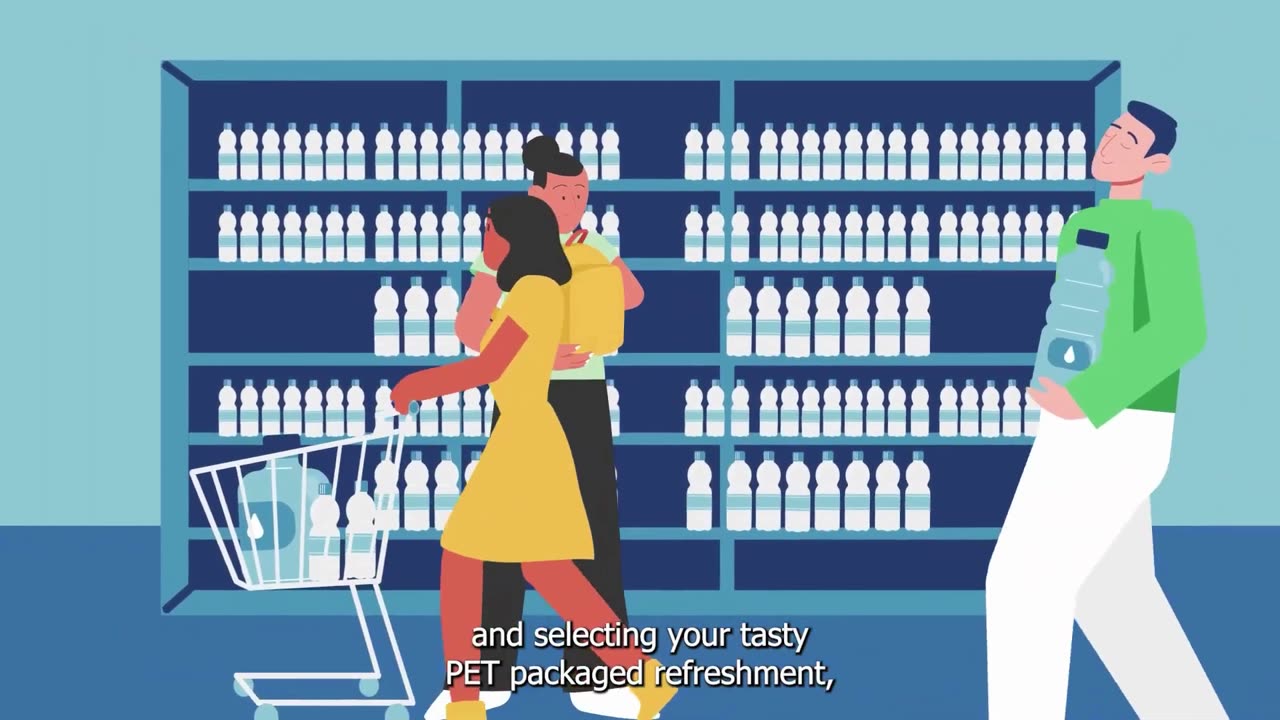Premium Only Content

The Truth About PET Packaging: Sustainability, Food Waste, and Reusable Benefits
Plastic plays a significant role in the manufacturing and packaging industry. Its versatility enables it to be moulded into different shapes and sizes, alongside many other useful properties.
However, as the world continues to take action against the global environmental impact of plastic, many companies are revising their operations to implement sustainable practices.
PET plastic is a sustainable packaging option and the leading type of plastic used for beverage bottles, owing to its excellent chemical resistance to organic materials and water, and high strength to weight ratio. Here we’re going to explore what exactly PET bottles are, assess their benefits, and compare them to other plastic types.
Is PET more eco-friendly than other types of plastic? PET is the preferred for plastic bottles (and other uses) as it’s 100% recyclable and highly sustainable. It can be recovered and recycled into new products again and again, reducing the amount of resources wasted. This is unlike other types of plastic, such as polyvinyl chloride (PVC), low-density polyethylene (LDPE), polypropylene (PP), polystyrene (PS), which are used for things cling film, single-use plastic bags, food containers, and disposable cups respectively.
PET also has a low carbon footprint as it uses less energy during manufacturing, which helps suppliers to reduce overall energy consumption.
Life cycle of PET The life cycle of a PET product can be very long, with low plastic waste created if consumers correctly dispose of it. The material is easy to recycle, and recycled PET is a valuable commodity with its closed loop potential. Most PET bottles are clearly labelled with the #1 resin code that indicates to consumers it’s fully recyclable, PET plastic. Some plastic containers are multi-layered, for instance, which some find time-consuming to sort properly.
Is PET safer than other types of plastic? As previously mentioned, PET is shatterproof and will not cause harm if broken or damaged — it’s known as the ‘safe’ plastic. PET doesn’t contain Bisphenol-A (BPA) either, a chemical that can be harmful in large quantities. Some types of plastic contain this, and it’s been reported to interact with the body’s endocrine system, potentially causing negative health effects. This is the main reason why so many consumers are switching from polycarbonate to PET water coolers, with the former type of plastic often containing BPA.
Overall, PET is a safe, hygienic packaging solution, approved by official health and safety boards. Its composition means it doesn’t react with any food or liquids that come in contact with the material, making PET bottles risk-free and safe to drink from.
#reusep.e.t #recyclep.e.t #reducep.e.t #sustainabilityinplastic #sustainable #circularity #carbonfootprint #papervsplastic
-
 2:04:52
2:04:52
Kim Iversen
14 hours agoElon's Pumping Out Babies Like They're Tesla Model 3's | EU Panics Over Peace Talks, Wants More War
168K159 -
 1:05:35
1:05:35
Man in America
17 hours agoFort Knox & Trump’s Secret Gold Move—The Financial Reset NO ONE Is Ready For?
119K133 -
 2:21:20
2:21:20
Robert Gouveia
13 hours agoTrump Goes to SCOTUS! Judge CAVES on DOGE? Fani Willis Not Happy!
127K32 -
 20:41
20:41
Stephen Gardner
13 hours ago🔥You Won't BELIEVE What JUST Happened To Don Trump Jr.!!
134K215 -
 58:00
58:00
The StoneZONE with Roger Stone
11 hours agoEuropean Leaders Resist Trump Peace Overtures To Their Own Demise | The StoneZONE w/ Roger Stone
95.8K12 -
 9:29
9:29
AlaskanBallistics
13 hours ago $12.11 earnedWyoming Suppressors and Rifles at Shot Show 2025
113K6 -
 1:06:40
1:06:40
Donald Trump Jr.
17 hours agoThe Left is Taking one L After Another, Live with Michael Knowles | Triggered Ep. 217
201K153 -
 47:17
47:17
Kimberly Guilfoyle
17 hours agoWoke Gets DOGE’d, Live with AJ Rice & Jarrett Stepman | Ep. 197
145K45 -
 20:11
20:11
Candace Show Podcast
15 hours agoBecoming Brigitte: Candace Owens x Xavier Poussard | Ep 6
218K376 -
 8:25:38
8:25:38
Dr Disrespect
20 hours ago🔴LIVE - DR DISRESPECT - ELDEN RING DLC - REVENGE
207K22